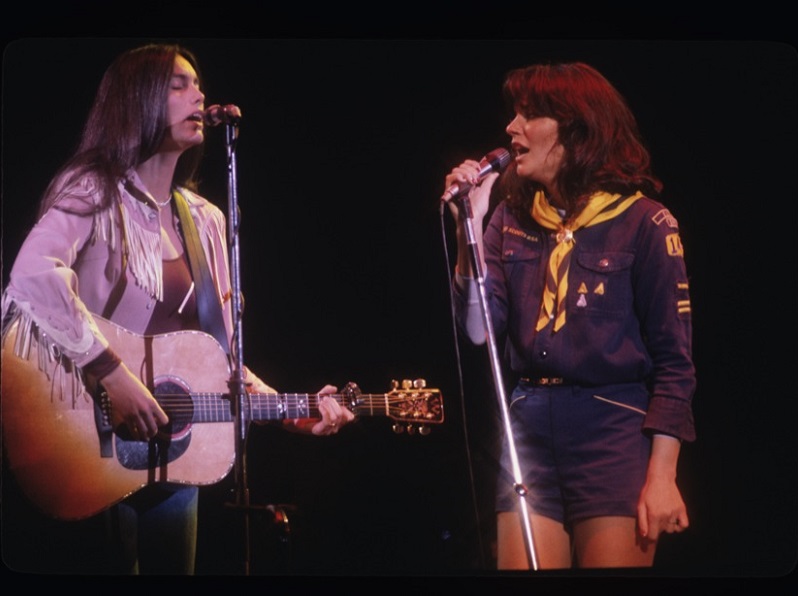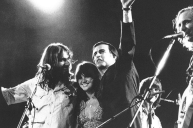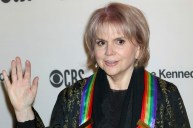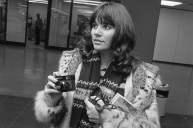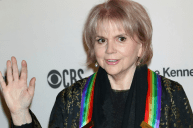CNN Films' New Year's Day broadcast of Linda Ronstadt: The Sound of My Voice exposed first-time viewers to one of the best documentaries in recent memory.
The Greenwich Entertainment film, directed by Rob Epstein and Jeffrey Friedman and produced by James Keach and Michele Farinola, tells the story of the Grammy-winning recording artist behind "You're No Good," "When Will I Be Loved" and others, in her own words. It features archival performance footage as well as interviews with Bonnie Raitt, Aaron Neville and other Ronstadt peers.
This recounting of Ronstadt's story sheds light on her human rights interests and chronicles her ongoing struggle with Parkinson's disease. In the process, the filmmakers share lesser-known stories about Ronstadt's talented family while incidentally revealing her degrees of separation from "Dueling Banjos."
Here's five quick takes on those and other lessons learned from The Sound of My Voice.
1. Her Maternal Grandfather Invented The Thermostat and Electric Stove
Early in the film, Ronstadt reveals that her mother's father, Lloyd Groff Copeman, was quite the successful inventor. Like Thomas Edison, Ronstadt's grandfather discovered useful products that still impact our daily lives. Beyond thermostats and electric stoves, Copeman invented flexible ice cube trays and improved on a new household technology, the toaster.
2. "Different Drum" Was First Recorded as a Bluegrass Song
It's well-chronicled that Ronstadt's biggest hit with the Stone Poneys, "Different Drum," was written by fellow inventor's heir Michael Nesmith before his stint with The Monkees. Ronstadt's band wasn't the first to record the song, though. That honor went to New York-based bluegrass group The Greenbriar Boys. Before cutting a future crossover hit, The Greenbriar Boys' lineup included future "Dueling Banjos" picker Eric Weissberg.
3. The Eagles Spun Off From Ronstadt's Backing Band
Ronstadt ran with Los Angeles' country rock and folk music scene, dating J.D. Souther and joining Jackson Browne, Judee Sill and others on David Geffen's Asylum Records roster. During her folk days, Ronstadt's band included drummer Don Henley and guitarist Glen Frey. Those two later formed their own group, The Eagles.
4. She Cut the Best-Selling Non-English Language Album in U.S. History
https://www.youtube.com/watch?v=3uDUIuXd1FE
Ronstadt stepped away from surefire hits in the early '80s, beginning with three albums of jazz and pop standards arranged by Nelson Riddle and continuing with collaborative 1987 project Trio with Emmylou Harris and Dolly Parton. Even those commercial and critical successes take a backseat to another 1987 release, Canciones de Mi Padre. The collection of mariachi selections shared Ronstadt's Mexican heritage with her global audience. The first of several Spanish language releases by Ronstadt became the all-time highest-grossing album of its kind in the United States.
5. Cameron Crowe Wrote Ronstadt's First Rolling Stone Cover Story
Director Cameron Crowe never stopped contributing to Rolling Stone, with his recent features including a 2017 piece on Harry Styles. A much earlier assignment for the Almost Famous storyteller told Ronstadt's story circa 1976. The film rightfully points to Ronstadt's first of several appearances on the cover of the Rolling Stone as confirmation of her mainstream arrival.
Now Watch: 5 Things You Didn't Know About Patsy Cline
